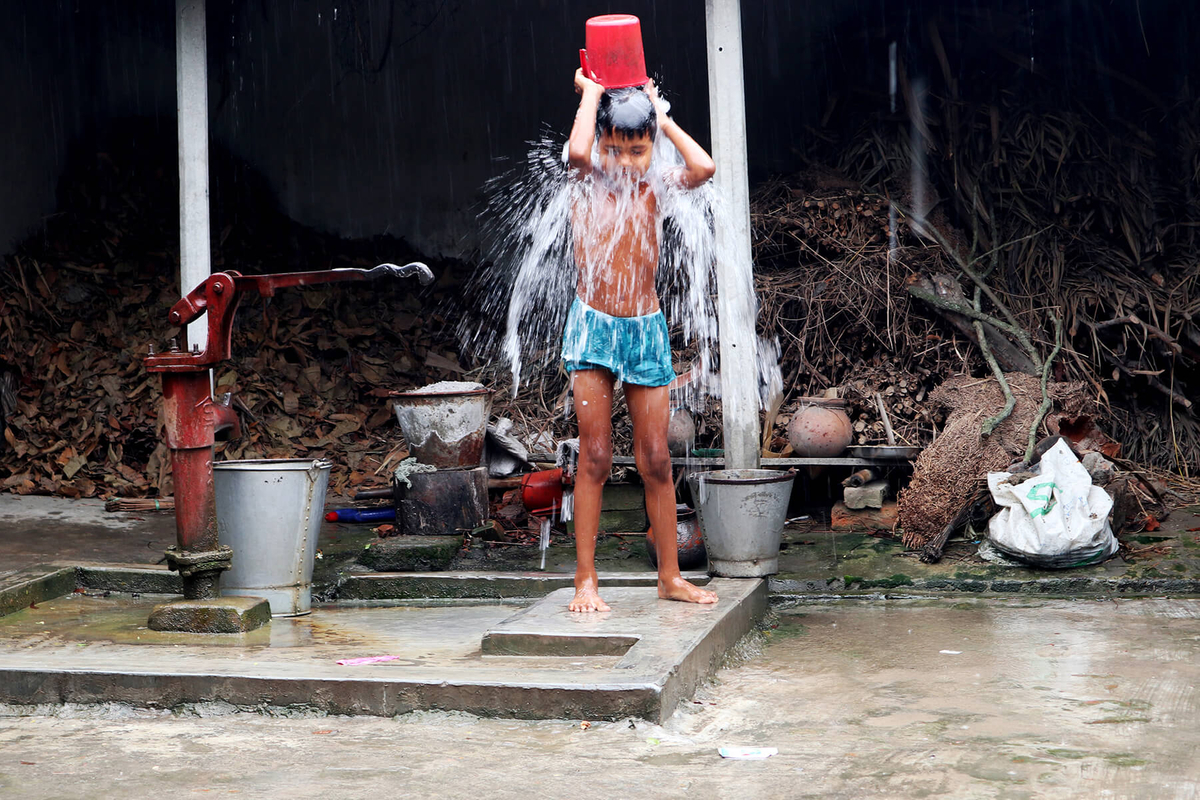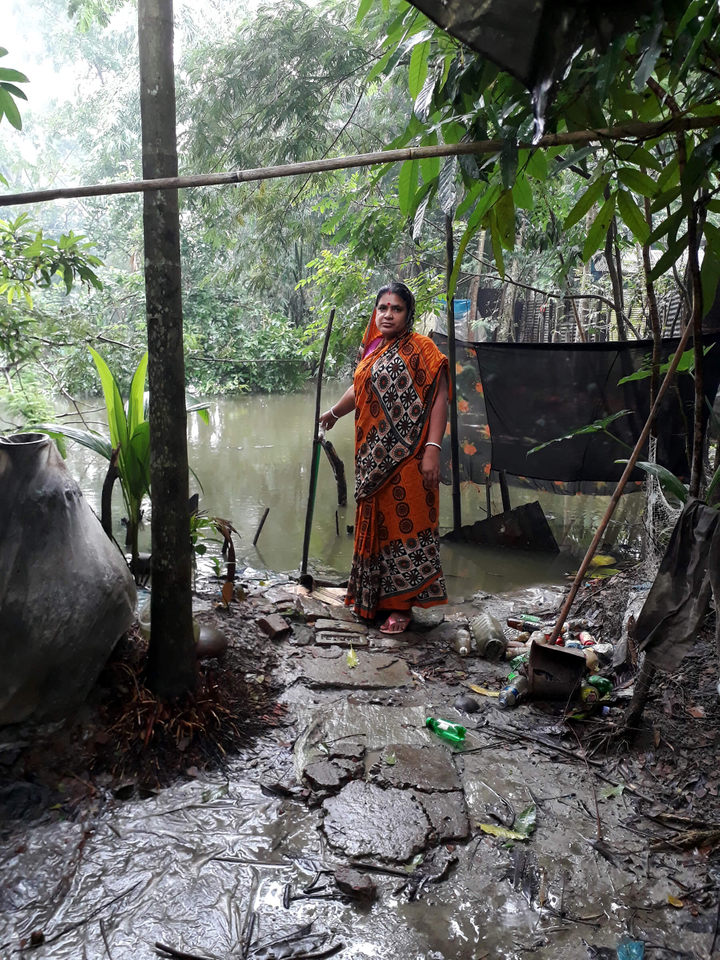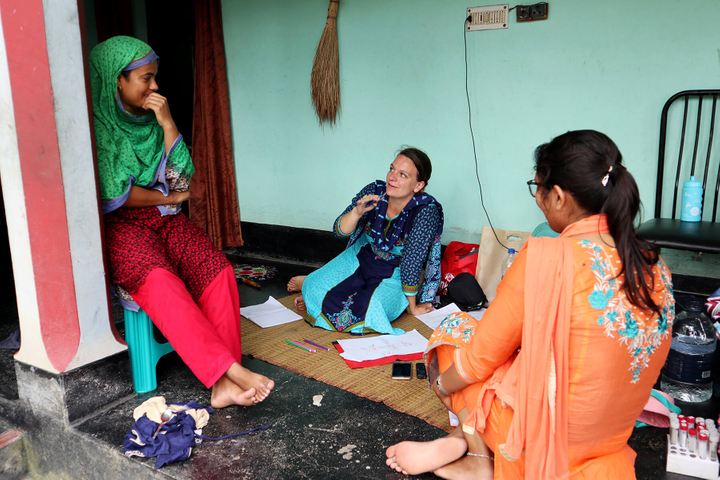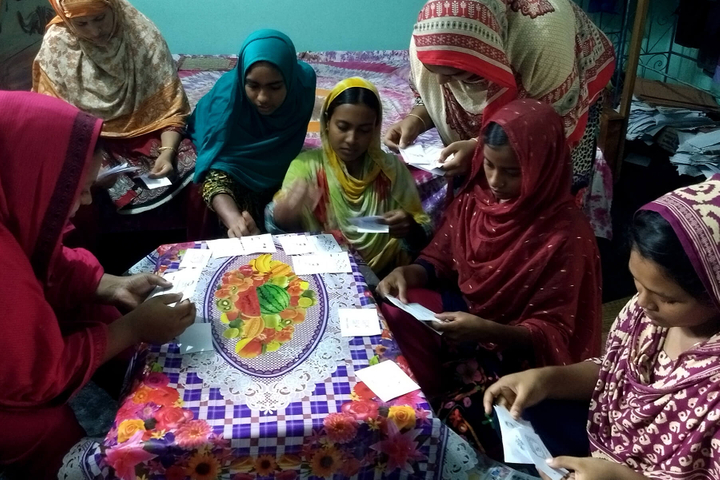Drinking water straight from the tap is a luxury that many take for granted. In countries such as India and Bangladesh many lack piped water supply. Rural women walk for miles to fetch safe drinking water or settle for drinking unsafe water. Annemarie Mink suggests technological intervention and a collective, inclusive approach to ensure palatable water for all.
I have always been amazed by the clean drinking water coming from the tap in all Dutch households. Fresh, safe drinking water. From every tap in the house. I realised the full extent of the luxury of being able to drink from every tap only when I visited India for the first time in 2004. It was my first visit outside of Europe, into the world of tribal families in the Indian states of Bihar and Jharkhand.
When I stayed there for one-and-a-half years, I fetched my own water from a tap 2 km away from my house and treated it using a filter. I enjoyed these walks every morning, but I had sufficient time to do so, and was always accompanied by other women.
The luxury of the availability and accessibility of clean and tasty drinking water struck me again when raising my children, who can safely drink the water from the tap in our house, who can take a shower and enjoy, while so many children in the world do not have this privilege.
This inspired me to dive into the world of drinking water. So when an opportunity arose to do water supply research at the faculty of Civil Engineering and Geosciences, in Delft University of Technology (TU Delft) I agreed immediately.

Piped water supply
In 2016 and 2017 I travelled through Bihar in India, and Bangladesh for my research. Local partners guided me to have a look at water supply projects, especially at piped water supply (PWS) systems. PWS is seen as a solid long-term solution, but it is also expensive, distrusted, and operation and maintenance are often an issue. People desire PWS systems mostly for their convenience, but in many cases do not trust it or like to use it for drinking.

I was already familiar with both the countries, but I never took such a close look at the water supply. I knew most people in rural villages were not using water filters, only those citizens who are aware of the danger of certain contaminants and are able and willing to pay for them. This time, I spoke to women who spend a lot of time collecting safe water for their children, but themselves drink water they know is unsafe. Because it takes too much time and effort to collect safe drinking water for the full household while they have so many other tasks every day.
At the same time, we tested water at PWS systems, and found harmful contaminants in some of them, in water people trust to be safe to drink. Or distrust, and in some cases thus rightfully so.
The pride of women in having piped water supply was for me a turning point. It makes their lives so much easier – being able to clean the house, wash clothes and take bath, without having to pump water all the time or walk long distances. The picture showed me exactly that: pride. Proud to have a tap in their courtyard or house. Convenience and status go hand in hand.

Need for a collective, inclusive approach
I listened, listened, listened, observed, observed, observed, and tested, tested, tested. I listened to and observed all stakeholders – from water consumers, to water service providers, local governments, community-based organisations, NGOs, and from research institutes to universities and national governments.

The challenge of safe drinking water is not easy to solve. It involves politics, money, behavioural steering, technology, capacity building and most of all: people! Most people have so many different challenges all at the same time, and they have such limited time to address them. And they do not only have needs, they have desires as well. A wonderful technology addressing a need, but not addressing a desire will not work. Having a clear idea of everyone's behaviour, needs, priorities and desires truly helps.
I design technologies that improve human well-being. Participation and co-creation are my forte. I have worked on several projects across the world, in many different cultures on different type of projects, ranging from energy to farming, health, healthcare and water.
People need to be listened to – is what I would say based on my experiences of working on these projects in various countries. To me, listening to the experts of their own situation, by co-creation and participation, and by building capacity and empowering people, we can start making a difference.

In Bangladesh I worked in a team on the design and development of the Tapp water app, an app that contributes to the uptake and acceptance of piped water supply systems in Bangladesh. The Tapp app comprises a smartphone application for the water service provider, a smartphone application for the water consumer, and a web application for distant monitoring and editing by local organisations.
When developing the app, not only attention is paid to the needs but also to the desires of the intended app users, resulting in the integration of a 'connect' and a 'knowledge' domain, besides a service, payment, and water quality testing domain. And while the app is intended for piped water supply systems, it also includes water quality testing and service for hand-pumps. Moreover, to ensure inclusivity, the app was designed to be compatible for basic button phones too, since not all households own smart phones yet.
The Tapp water app has become a smart, open-access app, which is currently being implemented in three project areas in Bangladesh to empower local stakeholders to take ownership of their own drinking water supply.
I believe that technology cannot solve all issues, but it can surely contribute to people's well-being, if implemented and used in the intended way. I know that safe and tasty water for all is not easy to achieve. But together, one step at a time, we can move towards safe and tasty drinking water for people, all people worldwide.






